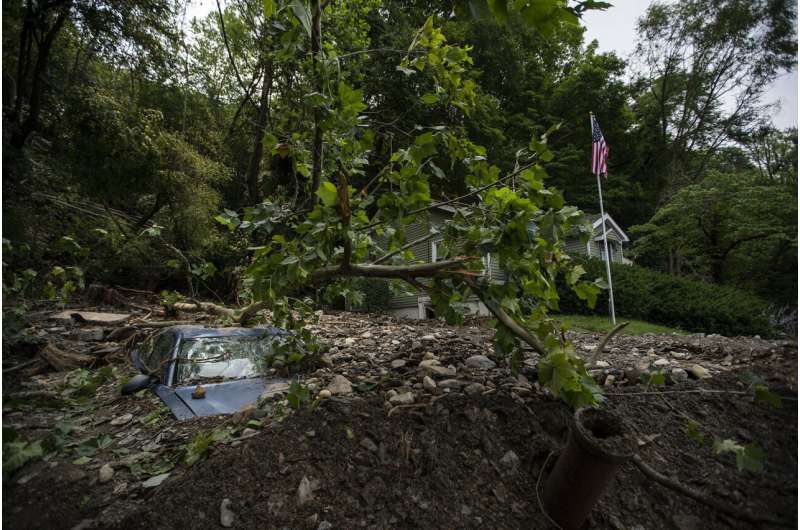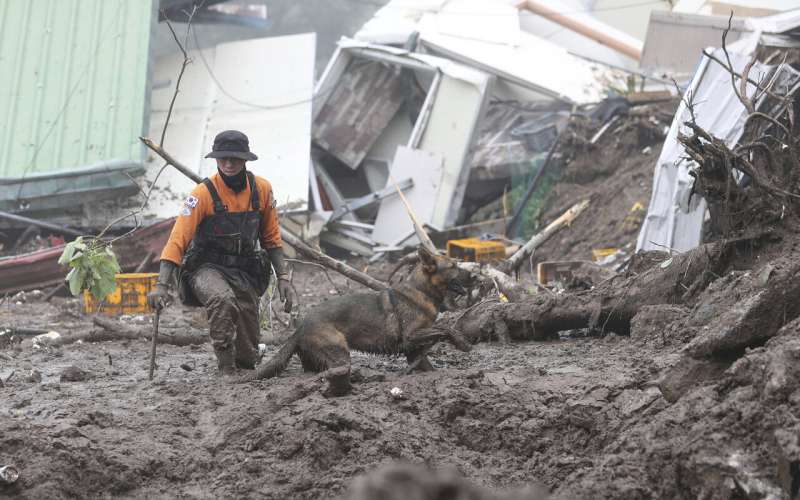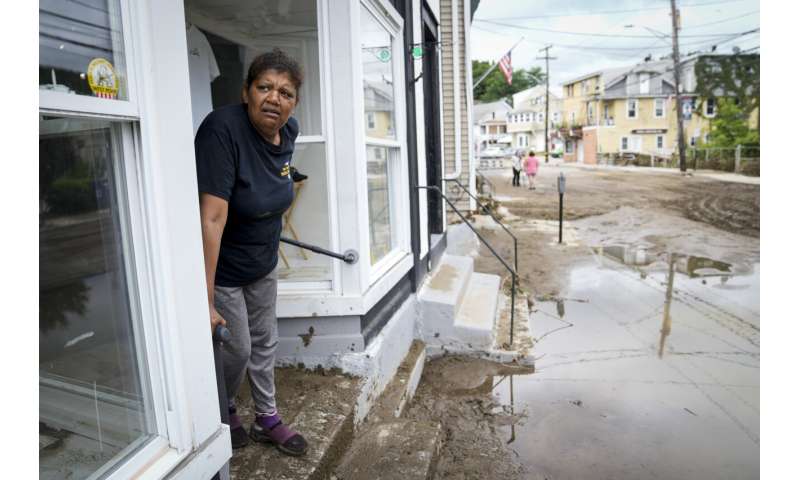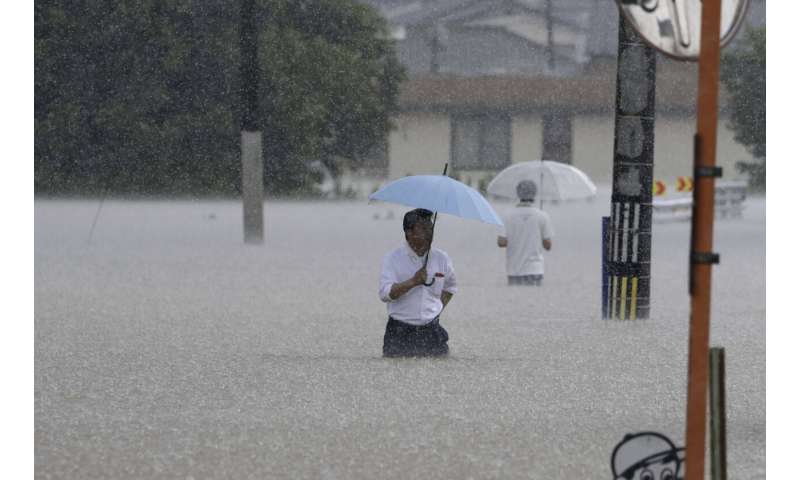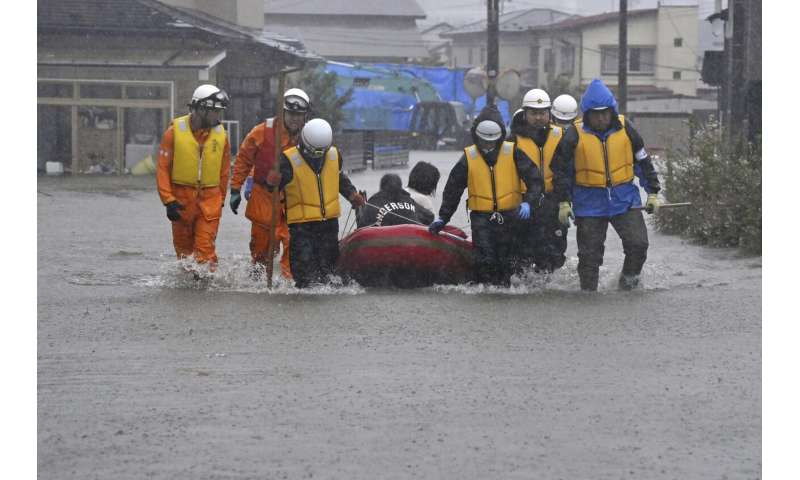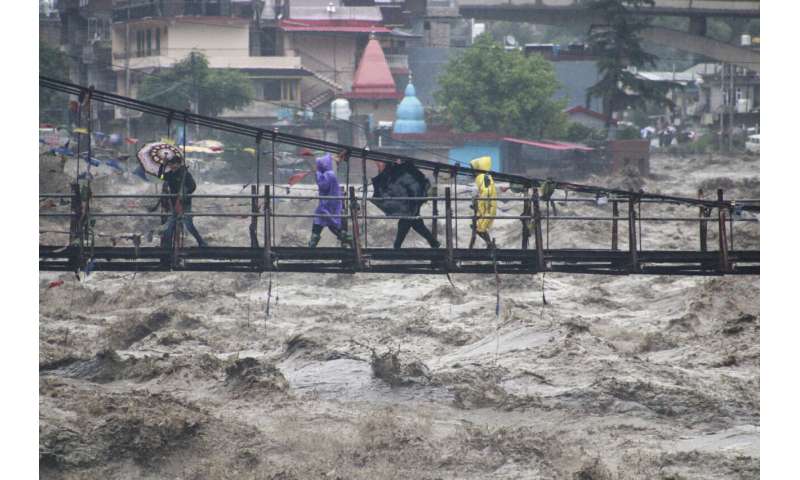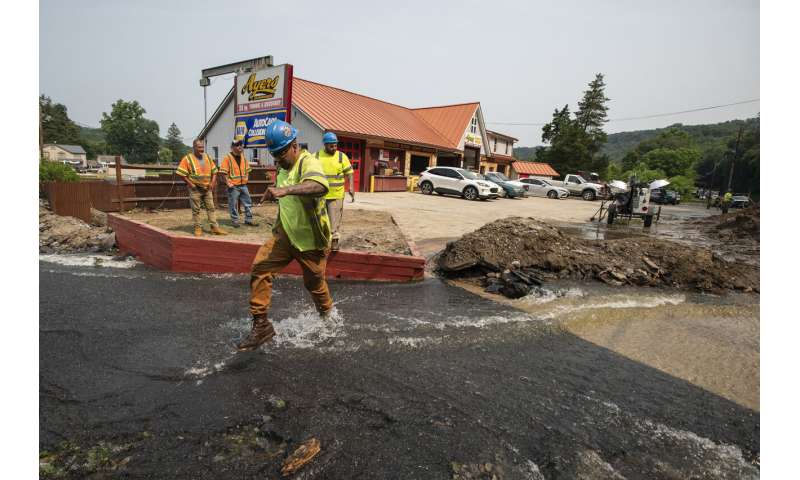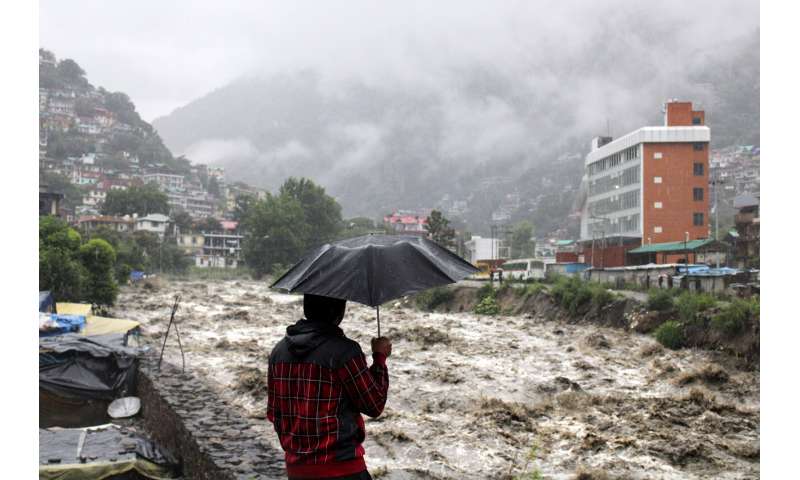Viewpoint: Paying the costs of climate resilience
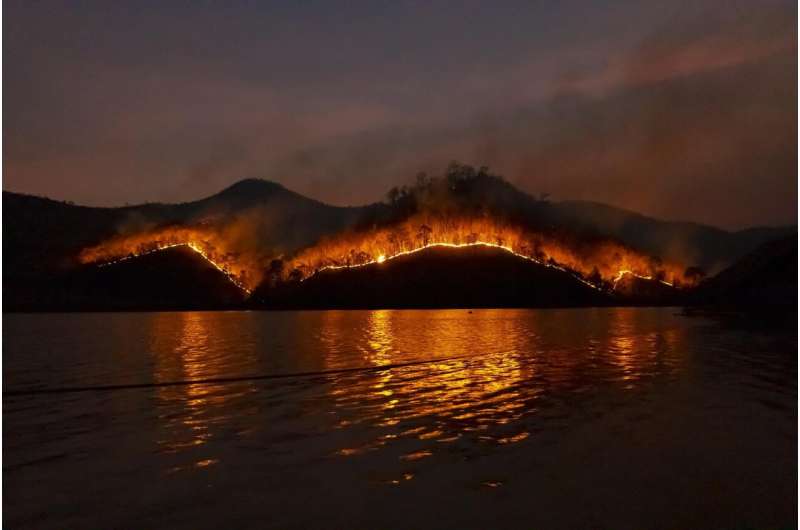
The transition to an environmentally sustainable economy has begun, but it will be a generation (about twenty years) before we will see moderation of global warming. The cost of reducing climate pollution faster would be an economic and political disaster. Slowing or shutting down economic growth would destabilize politics, and, given the rapidly advancing technology of arms and destruction, that instability would be more destructive than the impact of climate change.
The pace of the transition to a renewable resource-based economy depends on the development and adoption of new energy and waste processing technologies. It is difficult to predict how fast that process will be, but the sunk costs in existing technologies will only be discarded when new technologies are clearly better, cheaper, and more reliable than what they replace. The idea that climate pollution can be eliminated by political edict overestimates political power and underestimates economic power.
It is not simply powerful economic interests that influence public policy, but the sense of economic well-being perceived and experienced by the mass public. The maintenance of that sense of well-being is a critical foundation of political stability. The transition to a renewable resource-based economy must be careful to reinforce and not undermine that sense of well-being.
The fact that this transition will take time does not diminish our sense of urgency about its necessity, but it is important that we deal with the world that we live in rather than the one we might wish for.
This summer of fire, floods, and intense heat makes it clear that decarbonization must accelerate. But our work on protecting our communities from the impact of extreme weather events is even more urgent. While there continues to be discussion of "managed retreat" from low-lying areas vulnerable to flooding, the widespread geography of extreme weather indicates that you can run but you can't hide from climate impacts.
Perhaps we should move from the Jersey shore to the Green Mountains of Vermont: Oops, that won't work, Vermont just got hit with two months' worth of rain in a few days. Perhaps we could move to small towns in the Midwest: Nope, they've got those tornadoes along with overflowing rivers as well. Maybe we should move out west near the forests: Oh yeah, drought and electrical sparks are causing massive fires. Forget retreat, managed or under conditions of panic, we need to build a stronger and more resilient built environment.
And the need is urgent. Drainage systems, dams, buildings, transportation, and energy systems must be built to withstand the rains, wind, heat, and cold of climate-accelerated extreme weather events. The impact of extreme weather is massive and growing. According to Christopher Flavelle of the New York Times:
"Weather-related disasters pushed more than 3.3 million American adults out of their homes in 2022, census data shows. Of those, at least 1.2 million people were out of their homes for at a month or longer; more than half a million of them never returned, fueling a growing diaspora of domestic climate refugees."
Flavelle reports that we are not helpless to prevent damage from extreme weather:
"Technologies exist to protect homes against severe weather—but those innovations have been slow to seep into mainstream homebuilding, leaving most Americans increasingly exposed to climate shocks, experts say… Houses made from steel and concrete can be more resilient to heat, wildfire and storms. Even traditional wood-framed homes can be constructed in ways that greatly reduce the odds of severe damage from hurricanes or flooding. But the costs of added resiliency can be about 10 percent higher than conventional construction."
A climate-resilient built environment is going to cost money. Lots of money. And that means we will need to pay for those upgrades out of money that we'd rather use elsewhere but must be induced to spend on these protective measures. Government must lead with upgrades to public infrastructure such as roads, bridges, ports, dams, train tracks, and airports.
Taxes on income, sales, transportation, and tolls will need to rise to pay for these improvements. The anti-government forces controlling the U.S. House of Representatives are unlikely to be helpful here, and so we will need Mayors and Governors around the country to take the lead.
Here in New York, the state and city government are both taking action. Hilary Howard of the New York Times reported that the state has budgeted over $1.1 billion for flood control but wonders if it is enough. According to Howard's report:
"Catastrophic rainfall caused overwhelming floods in parts of the Hudson Valley and elsewhere in the country this week, leading New York officials like Gov. Kathy Hochul to warn of extreme weather that would be 'our new normal.' New York City's chief climate officer, Rohit T. Aggarwala, gave an even more dire warning, saying that 'the weather is changing faster than our infrastructure can keep up.' Thousands of projects are in the works across the state to combat the effects of climate change, including rethinking flood-resistant housing, updating weather models and racing to manage overflow rain. But many will take decades to complete, and there are concerns over whether it will be enough."
But clearly, New York state and city are working hard to reduce climate risk. In concert with government, the private sector also has a critical part to play in reducing the costs of climate risk. Insurance companies can play a central role by requiring building owners to meet higher standards of resistance to floods, fire, and wind to purchase insurance. Owners who meet these higher standards should be given a discount on the insurance they buy. Insurance companies have a clear self-interest in reducing the cost of climate risk. They should work to play a role in convincing property owners to invest in resilience measures. There is ample precedent for this. When buildings first began to electrify at the end of the 19th century, fire insurance companies supported William Henry Merrill's Underwriters Lab, which tested and certified the safety of equipment used in buildings ranging from refrigerators to boilers. Insurance companies required the use of these approved devices before they would agree to sell you building insurance.
Today, some insurance companies are abandoning high-risk states like Florida and California. These insurers are unwilling to take the risk involved in insuring homes in climate-threatened places. Just as government had to assume the risk of flood insurance, we may eventually see that in home insurance as well. Homeowners holding mortgages are typically required to carry insurance, and government and insurance companies will need to work together to require more storm-resistant construction and retrofits. Otherwise, the cost of insurance will become prohibitive.
Government may well need to play the role of reinsurer in climate-threatened areas because private reinsurers may be unwilling to take on the financial burden of insuring insurers. You will find no climate deniers in the insurance and reinsurance industry. As Sean Baldwin and David Coon observed in Risk Management Magazine last summer:
"It is no secret that climate change is having a serious impact on the insurance market, affecting industry participants from the level of primary insurance all the way up to insurance-linked securities (ILS) and retrocessional reinsurance. With severe catastrophe events increasing in both frequency and severity as global temperatures and sea levels rise, industry participants have faced rapidly increasing exposure to severe catastrophe losses."
"For instance, one Moody's study found that more than 70% of global insured wildfire losses between 1980 and 2018 occurred between 2016 and 2018 alone. This dramatic increase in catastrophe risks poses challenges for every level of the insurance industry. For buyers of primary insurance, the changing nature of catastrophe risks results in increased premium rates from insurers who face not only increased insured losses, but also increased loss adjustment expenses tied to more frequent coverage disputes…. These changing risks, increased volatility and increased reinsurance demand will result in increased costs for reinsurance buyers."
As insurers and reinsurers find the risks growing, they are charging more to insure property, or simply refusing to do business. Lenders will not lend capital to businesses in uninsurable locations or will charge so much interest that borrowing is not practical. All of this could lead to a damaged business environment in climate-threatened regions.
The alternative to this risk-induced death spiral is to develop a built environment that is more capable of resisting catastrophic destruction. We've seen this in earthquake zones where stricter building codes enable structures to survive quakes with only minor damage. Buildings need to be constructed to survive forest fires, floods, and high winds. Towns and cities need to make sure they can handle the drainage needs of five inches of rain in a couple of hours. We can build more resilient structures if we are willing to pay the price.
We have entered an era of extreme weather, and we need to invest the massive resources required to survive weather impacts. One danger of this extreme focus on climate adaptation is that it might deemphasize the importance of reducing climate pollution. That would be a mistake because the planet could still get warmer, causing even greater damage.
I suspect that the political dynamic caused by these weather disasters will lead to greater understanding of the need to decarbonize our economy. Most people understand the growing intensity of floods, fire, droughts, and heat are impacts of climate change and are starting to see that we need to attack both causes and impacts.
The technologies that we rely on have made the world more comfortable, exciting, stimulating, and dangerous. We need to take these dangers seriously, and that requires reinforcing our homes as well as investment in the collective body we call government. We need policies, rules, and resources to ensure that the costs of our technological world do not exceed the benefits. Protection costs money.
In America we have the wealth to protect ourselves, what we lack is the political will to act. Conspiracy theories and fact-free social media rantings continue to clog our political discourse and make it difficult to address real dangers. Sadly, it takes floods, heat, and fire to convince people about the reality of our polluted planet. That growing awareness now needs to stimulate action.
Provided by State of the Planet
This story is republished courtesy of Earth Institute, Columbia University http://blogs.ei.columbia.edu.



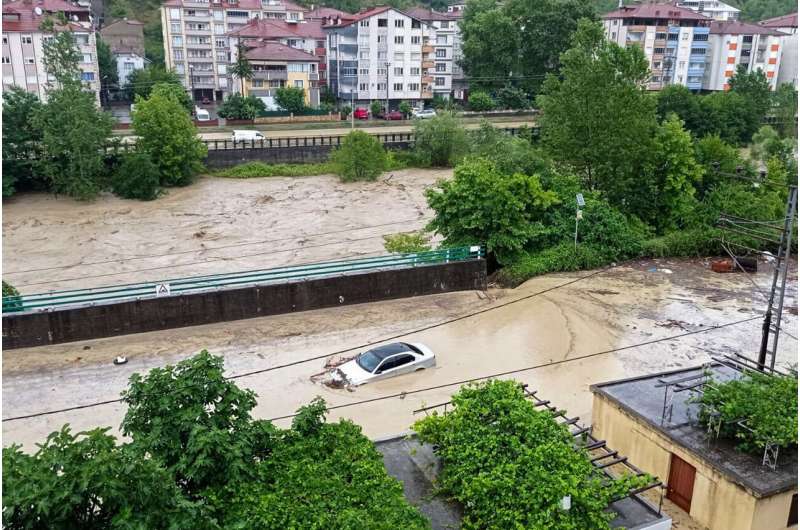 A partially submerged car is visible in floodwaters after heavy rains in Zonguldak, Turkey, July 10, 2023. Scientists say increasingly frequent and intense storms could unleash more rainfall in the future as the atmosphere warms and holds more moisture. Credit: Dia Images via AP, File
A partially submerged car is visible in floodwaters after heavy rains in Zonguldak, Turkey, July 10, 2023. Scientists say increasingly frequent and intense storms could unleash more rainfall in the future as the atmosphere warms and holds more moisture. Credit: Dia Images via AP, File